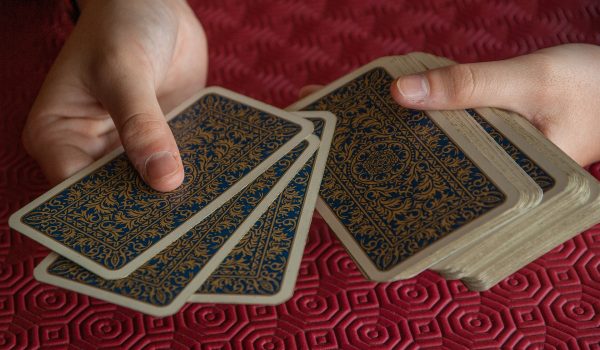- October 15, 2020
- By Reno Jackson
- In Articles, Guest Post, Meta Reports
- No Comment
- 0
Team WildSide Wild Meta Report (October 2020)
Mage is now the top class to beat, but Priest has the strongest performer. Darkglare is gone, but Warlock is still going strong. All the classes have some tricks up their sleeves. There is light at the end of the tunnel for Rexxar and Illidan.
We would like to thank these top legend players who have given us their expert opinions and helped with writing the report: RenoJackson, Jonahrah, Hijodaikan, SgtSlayer, EpigPlayer, Memnarch, xtuliop, Goku, Niko, Beeozan, Malekith, and Duwin. Their Twitters are to be listed at the end of the report.
As we write without any monetary support, we need your support to keep on writing meta reports for the foreseeable future. If you really like the report and want us to keep going, please consider becoming a Patron here: https://www.patreon.com/thewildside
To get updates on all our future reports, consider joining our Discord server The Wild Side: https://discord.gg/FVZgtVs
Welcome to the Fifth Edition of Team WildSide’s Wild Meta Snapshot for 2020! We are teaming up with Hearthstone-Decks to provide you the most accurate Wild report possible.
In this meta report, we will be going through a tier list of 54 decks we’ve seen frequently on ladder, explain the method of computing the tier list, break down the meta and analyze the decks as detailed as they need to be. In this report, we have included a Meta Ranking and will be further discussing the state of each class in terms of power and diversity. Also, we’re including some WildSide special decklists that were made by none other than our experts!
HOT! Check out this new tournament sponsored by our team at Team WildSide. Classic cards, Naxxramas, and Goblins vs Gnomes are allowed. Prize pool $100. Join here:
METHOD
We collected our experts’ opinions through a spreadsheet, where our Top Wild legend players will rate the given decks with a corresponding score from 1 to 4 in increments of 0.5 (with 1 being top Tier 1 and 4 being bottom Tier 4). We then collect the result, standardize and categorize them in 4 different Tiers. This is what they mean:
Tier 0 (Absolute oppression)
The one deck to beat. You either play it or play decks that can beat it.
Tier 1 (Meta-defining)
Highly-optimised decks with extreme raw power that are very well positioned in the meta.
Tier 2 (High-legend viable)
Competitive decks that are not as well-rounded, but can snatch games off of Tier 1 decks or prey on their direct counters.
Tier 3 (Legend-viable)
Fringe decks that can succeed in the right meta, but are either suboptimal or outdated.
Tier 4 (Average)
Decks at a weaker power level that require an extensive understanding to be able to pilot well, but are not recommended for ladder experience.
Tier 5 (Meme)
Decks that aren’t typically played for the purpose of climbing ladder, but still have a decent enough presence to be included in the report.
Within each tier, decks are categorized to either High tier, Mid tier or Low tier to further differentiate their power level.
For Meta Ranking analysis, we allocate points to each deck from Tier 0 to Tier 3 then sum them up. The point system for rating a single deck is as below:
Tier 0: 22
Tier 1: 18 (High), 15 (Mid), 12 (Low)
Tier 2: 9 (High), 7 (Mid), 5 (Low)
Tier 3: 3 (High), 2 (Mid), 1 (Low)
Each deck is also assigned a popularity ranking and a respective coefficient multiplier based on its popularity. The highest multiplier is 12 and the lowest is 7. For example, if Odd Paladin is High Tier 1 and has a multiplier of 12, it will bring the class an additional 216 points.
Therefore, a class can be placed highly on the Ranking system based on one (or both) of these elements: having a few strong decks (deck power) or having many decks (class diversity). If classes share the same score, the class with more top decks will be ranked higher.
REMARKS
Yet another wave of nerfs has been slammed down by the almighty Blizzard; but this time, the Wild community seems rather indifferent about the whole situation. The only decks that are severely impacted are Tortollan Mage and Jade Druid. While the former deck is abhorred by a large portion of the community, the latter hasn’t been all that relevant for a long time. Nevertheless, these changes still had a big enough effect to alter the landscape of the format.
At first glance, it looks like we’re back to the Wild meta before the era of Darkglare: a rock-paper-scissors match between Reno Priest, Time Warp Mage and aggro. But in reality, the nerf cleared the way for many slower midrange strategies that can target at least one of the three major pillars. Cubelock is once again a respectable ladder option. Libram Paladin and Tip the Scales Paladin are strong contenders for sleeper decks. Reno Secret Mage and Reno Galaxy Mage feed off unsuspecting players mulliganing for the quest. A much faster version of Reno Hunter branched off and became the beacon of hope for the class.
Many decks that were previously dominant have fallen off. Darkglare remains a strong deck, but now it’s just another early tempo deck looking to fight hard for board while being a fair bit less unfair. Warrior decks which were primarily played as anti-meta tools, like Bomb Warrior and Dead Man’s Hand Warrior, have lost traction. Kingsbane Rogue now has a target on their back as the faster aggro decks are out in full force.
TIERLIST
This is a single screenshot taken from our spreadsheet if you find the tierlist infographics too long (you can open the photo in another tab to see the full-sized picture).
TIER 1

HIGH
Combo Reno Priest
Ranked: 1 (+1)
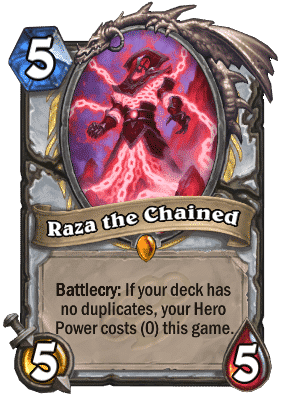
Combo Reno Priest is one of the most iconic decks in Wild Hearthstone. Popularized after the introduction of Shadowreaper Anduin, Combo Reno Priest assembles its combo by reducing its hero power to 0 with Raza the Chained and combining it with many cheap cards. Combo Reno Priest either plays Spawn of Shadows or Prophet Velen as its finisher, and it utilizes plenty of draw to get there.
Reno Priest is once again back on top, and it should stick around for the foreseeable future. The deck is so effective and efficient at what it does that it takes an extraordinarily unfair deck like pre-nerf Darkglare Warlock to take away its throne. An abundance of stall, board clears, and draw, coupled with a consistent win condition and an extremely compact burst package (Spawn of Shadows) makes it hard for many decks to counter the Priest, even ones designed to beat it.
It’s almost impossible to ‘nerf’ the Priest defensive package since the class has so many tools, it can easily find replacements for them. Rechaining Raza might be too severe a punishment for such an iconic deck. So what we propose is to dismantle Reno Priest’s burst engine—Spawn of Shadows. By bumping up the mana cost or making him deal less damage per Inspire trigger, the Priest at least won’t be able to kill from 30 and the damage ceiling might be lowered just enough so slower decks can win without playing a Grizzled Wizard combo.


MID
Time Warp Mage
Ranked: 2 (+9)
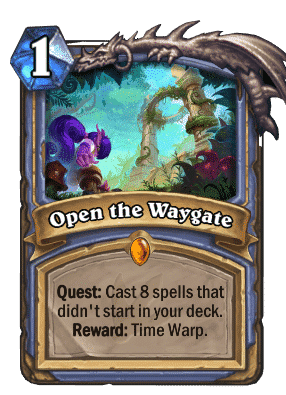
Time Warp Mage, better known as Quest Mage, gets its namesake from the card Time Warp, the reward of the Mage quest Open the Waygate. The Mage tries to complete the quest quickly by using Sorcerer’s Apprentice combined with cheap spells, Mana Cyclone, or Evocation. When the quest is complete, they can cast Time Warp alongside 0 mana 8/8s to try to kill their opponents in the extra turn. Archmage Vargoth is sometimes used to give the Mage another turn to comfortably set up for lethal.
Old decks return in flocks. Time Warp Mage seems like that annoying stain that never gives Reno Priest a break. As one of its true counters, Time Warp Mage reemerges as a major player who preys on slow, anti-aggressive decks. However, it is worth mentioning that a well-timed Mindrender Illucia from the Reno Priest can single-handedly turn the matchup on its head.
Although the deck generally fares well on ladder at the moment, it only particularly flourishes if you hit a pocket meta where Paladins and Aggro Druids aren’t around. Jade Druid has mostly left the scene, but there are still plenty of victims for Time Warp Mage to bully. Cube Warlocks, Pocket Galaxy Mage, and Highlander Priests make up a significant portion of the meta. With a new minion heavy version that bolsters its early game, slower Midrange decks are also not a big threat to the Mage. Odd Rogue and Even Shaman find it a bit harder to dominate the early game when Wandmaker and Wand Thief contest the board.
It takes a deck with an enormous early-game swing like Aggro Druid and Tip the Scales Paladin to truly give the Mage nightmares. The deck can improve its matchup against aggro even more with Firebrand, but that might be too big a trade-off of its core potency. After all, explosive highrolling should still be Jaina’s expertise.


LOW
Discard Warlock
Ranked: 3 (+5)
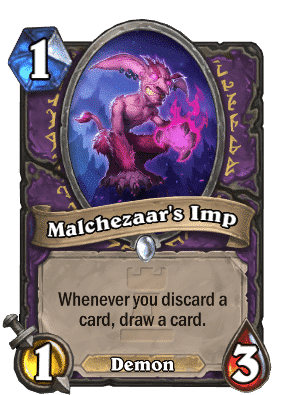
Discard Warlock is an aggro deck that aims to generate tempo through Discard synergies. While Discard cards typically sacrifice hand resources for immediate tempo, cards like Silverware Golem and Hand of Gul’dan can effectively negate these downsides. As such, the Warlock can create huge boards very early on, while Doomguard and Soulfire provide damage to finish off the game.
For many players, Discard Warlock is the direct substitute of the infamous self-damage deck post-Darkglare era. So far, it’s living up to the expectation, although the deck functions differently from its debilitated cousin. Discard Warlock was never weak, but its definition of unfairness felt like child’s play compared to Darkglare Warlock. Therefore, its formula to success is resilience, and a whole lot of that.
Discard Warlock refills its hand really well; we all know that. It’s not often we see an aggro or midrange deck maintaining a hand-size of 7 to 10 cards until it draws its whole deck on turn 8. This specific strength makes Discard one of the best aggro decks into slow control, and allows it to run other aggro decks out of steam. However, Discard Warlock can easily lose board against faster aggro decks. This is where the now-nerfed Darkglare comes in. It works like a Mechwarper for demons, and Mechwarper yells TEMPO. Darkglare helps you get on board and helps you recover lost tempo, just not to the insane degree as before. But at 2 mana, it’s easier to just slot the card into the deck without it being the centerpiece.


Odd Rogue
Ranked: 4 (+1)

Odd Rogue is an aggressive-midrange deck that gets its name from playing only odd-costed cards. Powered by Baku the Mooneater’s Start of Game effect, the rogue gains access to a 2/2 weapon at any stage in the game. This gives the rogue an incredibly consistent damage output and early board control, and allows it to play a variety of synergistic Weapon and Pirate cards.
Odd Rogue proves that consistency always prevails, even in a format where injustice reigns. The secret here is consistency served with a side of highroll. Tour Guide has transformed how you typically plan out the first few turns of Odd Rogue, and possibly how you play Odd Rogue in general. Compared to the pre-Tour Guide version, we’d say that this one is better by a fair bit.
So how different is Odd Rogue now? The one thing we can observe is that the playstyle is more direct. Odd Rogue relies on its weapon more than ever now, with Deadly Poison and Vulpera Toxinblade beefing up its dagger. An early Tour Guide can certainly chuck in some serious damage while allowing the Rogue to develop a board with tried-and-true minions like Hench Clan Thug. Secret Passage and Cutting Class provide the deck with some much-needed refill after such a strong early game. This playstyle feels more akin to the golden age of Baku when Cold Blood was still 1-mana, and is a step up from the minion combat heavy versions with Magic Carpet and/or Southsea Captain. Odd Rogue loses more heavily to swarm decks like Odd Paladin now, but let’s be frank, you don’t play this deck to beat Paladins.
More damage means that Odd Rogue can beat slow decks more consistently, but that’s not the number one reason to sport the deck. Just like Time Warp Mage, Odd Rogue is superior to Reno Priest when facing them head-on. The combination of unlimited damage and Beneath the Grounds often prove too much for the Priest to overcome. If only Secret Passage wasn’t nerfed, we would’ve seen the deck back near the top for the first time in ages.



TIER 2

HIGH
Kingsbane Rogue
Ranked: 5 (-2)
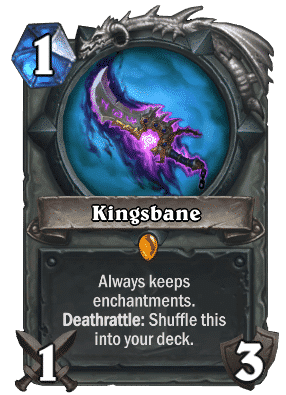
Kingsbane Rogue is a deck that revolves around buffing and redrawing its namesake card, Kingsbane, to create a high-attack weapon that will inevitably end the game. Kingsbane Rogue used to play a Mill package with Coldlight Oracle, but after the nerf to Leeching Poison, it has switched to an early aggressive Pirate package.




Control Cube Warlock
Ranked: 6 (+15)
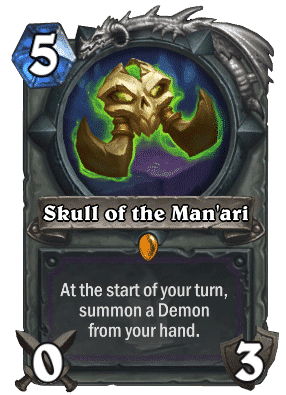
Control Cube Warlock is a specific variant of the Cube Warlock family. This warlock deck plays many slow Deathrattle cards that can gain value from Carnivorous Cube and N’Zoth, the Corruptor. Rather than trying to get on board early, the Warlock defends in the early game with reactive spells like Defile and Dark Skies, before cheating out demons and outvaluing their opponent.
Slow and vulnerable to Reno Priest, Cubelock is unable to sneak back into Tier 1 following the nerfs. Nevertheless, the environment is much more favorable for this iconic deck now that Darkglare has left the scene and decks that can actually be swept up by Defiles and Voidcallers have returned.
The powerful core Demon package allows Cubelock to be more adaptable to the meta. As observed, different builds of the deck employ different tech cards to serve their purposes. Greedy decklists play Expired Merchant for extra Gul’dans or N’zoths. Decks that play Enhanced Dreadlord and/or Doomguard are better fits for Archwitch Willow. Dirty Rat is the only counterplay to OTKs. How you build the deck all depends on what you’re seeing on ladder, and this adds layers to decision-making even before games start.
Cubelock is getting less and less associated with Carnivorous Cube itself and more and more aligned with the Demon package in general. In truth, you can play a very similar Control Warlock deck without the Cubes, and add in alternate win conditions like Fel Reaver + Treachery or Gnomeferatu. But as it stands, none of these decks can compete against the sheer value a single card can bring.



Odd Paladin
Ranked: 7 (+3)
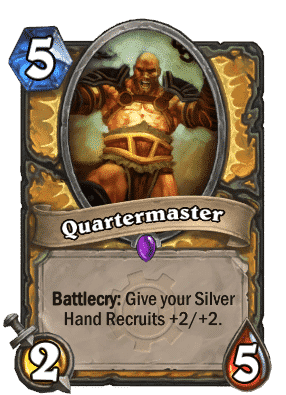
Odd Paladin is an aggressive-midrange deck which gets its name from playing only odd-costed cards. Powered by Baku the Mooneater’s Start of Game effect, the Paladin can summon two 1/1 recruits at any stage in the game. This gives the Paladin an incredibly consistent board presence that synergizes with cards like Quartermaster, Warhorse Trainer, and Steward of Darkshire.
The naysayers thought that Odd Paladin would take the meta by storm with its 1 mana 3/3 Tour Guide tempo, and that might finally turn out to be true. The formula of consistency + turn 1 highroll works particularly well in Odd Paladin, especially when the deck has access to Righteous Cause to potentially vomit 10/10 worth of stats on Turn 2. To wholly focus on the token generation gameplan, some decklists have cut Goody Two-Shields and add in cards that are good with small minions like Faceless Corruptor and Blessing of Authority.
There are some setbacks that prevent Odd Paladin from being at the top of the tier list, however. Unlike Odd Rogue, Odd Paladin no longer has a Highlander disruption like Beneath the Grounds after the Bad Luck Albatross nerf, which means Reno Priests are happy to devour the Paladin alive for supper. Other slow decks like Druids and Cubelocks are much happier dealing with a consistent stream of tokens than direct damage (Odd Rogue, Kingsbane Rogue) or Turn 1 blowouts (Aggro Druid). Nevertheless, Odd Paladin is a very strong option for laddering, as its performance never falls too low even for unexperienced pilots.



Aggro Druid
Ranked: 8 (+5)

Aggro Druid is a typical Aggro deck that aims to win very early on by playing very cheap and efficient minions. The deck can fill the board really quickly and end the game with board buffs like Power of the Wild and Savage Roar. The most recent versions also use Embiggen to pump overstatted minions on board.
Aggro Druid has evolved into one of the most highrolly decks in the game. In a sense, it’s like a mini-Darkglare Warlock that goes off much earlier, around Turn 1 or 2. Either you clear the board by then, or you die a horrible death. With the inclusion of Gibberling, the Druid player can fill the board much earlier using a few spells, namely the new Adorable Infestation. Embiggen is still kept for free 3/3 Patches and 4/4 Parachute Brigands, and the rest of the deck is still pretty much the same.
While very weak into different flavors of Control Warlock, Aggro Druid is very serviceable against most other classes. It floods the board ridiculously early, and some decks simply don’t have the tools to deal with that kind of opening. On good to great hands, even Reno Priests have trouble keeping up with Aggro Druid. On top of this, it naturally plays counter cards like Nerub’ar Weblord and Cult Neophyte without sacrificing early game power (although many have cut these for cards like Intrepid Initiate after Darkglare is gone). And if you run out of cards, just draw Voracious Reader.


MID
Big Shaman
Ranked: 9 (-3)
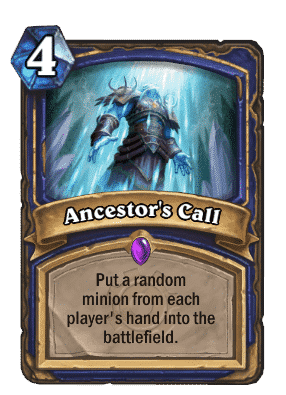
Big Shaman is a control deck that gets its name from cheating big minions. Ancestor’s Call, Muckmorpher, and Eureka! are essential to the strategy, as they allow big minions like Y’Shaarj and Scrapyard Colossus to enter play way earlier than they should. Other than that, the deck plays plenty of healing, AOEs, and removals for survival.


Even Shaman
Ranked: 10 (-3)
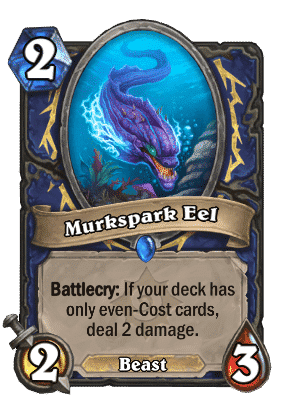
Even Shaman is a midrange deck that gets its name from playing only even-costed cards. Powered by Genn Greymane, the Even Shaman can spam early totems to power up highly-synergistic cards like Totemic Surge, Totemic Might and Thing from Below. The deck capitalises on its flood of totems in the mid-game with cards like Splitting Axe, Draenei Totemcarver, and The Storm Bringer.
Once again, Even Shaman shows up consistently but unspectacularly. With Diligent Notetaker being the only new noteworthy inclusion, the deck pales in power level against the top decks. The only saving grace for Even Shaman is the recent meta shift towards more aggro, something Thrall welcomes with open arms.
Even Shaman enthusiasts are trying to find a balance between early game aggression and mid game meat. In this process, ultra-fast builds with Lightning Bloom and Voracious Reader and stat-heavy builds with Flamewreathed Faceless and The Lurker Below are dropped. Totem-centric decks are still the best performers, with Diligent Notetaker synergizing incredibly well with the 0-mana totem buffs. Crackle is still the only burst, but Even Shaman often wins before they need any burst at all.


Time Warp Highlander Mage
Ranked: 11 (+10)

Reno Time Warp Mage is a Highlander deck that occupies the middle ground between Reno Mage and Time Warp Mage. On one hand, it retains the powerful extra turn win-condition provided by the quest. On the other hand, it uses Kazakus, Reno the Relicologist, Reno Jackson, and Zephrys the Great as stabilizing tools or extra value.
The nerf to Open the Waygate has affected Reno Time Warp Mage far more than its non-Highlander cousin, making it drastically less popular than before. However, the deck still has a solid place in the meta due to a more balanced matchup spread and the ability to fend off aggro. Reno Time Warp Mage has gained a few more cheap spell generators from Scholomance in the form of Wandmaker and Wand Thief. Another powerful addition is Firebrand, which is much better than Flamewaker in a deck that isn’t spamming as many spells per turn and cares more about board control.


Bomb Warrior
Ranked: 11 (-7)
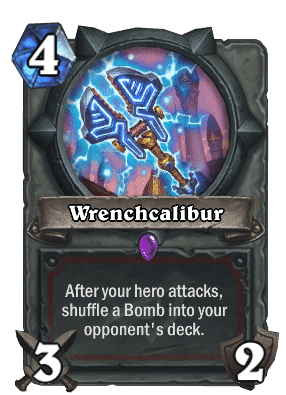
Bomb Warrior is a midrange deck that relies on damage output from cards that shuffle bombs into its opponents’ decks. It aims to seize the board with early cards like Risky Skipper and Bloodboil Brute and hold out until the opponent dies from taking bomb damage. There are many different supporting packages in addition to bombs, but the most popular version plays an Enrage package.
The post-Darkglare meta is a much more difficult meta for Bomb Warrior to operate in. As with many other Warrior decks, the strength of Bomb Warrior comes from the ability to closely tech for some key matchups. With only Reno Priest and Darkglare Warlock as relevant decks, this was much easier to do. Now, the Warrior needs to do well against both aggro and control, and it can’t always do that.
Bomb Warrior is an expert at defusing Reno Priest, and the Skipper package is still one of the most efficient ones there is against aggro. However, the return of Cubelock is bad news for the deck. Big taunts, healing, AND not a Reno deck? Not a good look. If Bomb Warrior attempts to tech their deck for these matchups, they might cut too much fuel for Risky Skipper and might not win against aggro consistently as a result. Hence, the challenge is to find value generators or damage sources that take up the fewest slots in deck. A single copy of Galakrond might help with this, as it acts as infinite damage you otherwise won’t have access to.
Note that Bomb Warrior only acts as a legitimate counter to Reno Priest and aggro decks, which make up a significant portion of the high legend ladder. As you move further down the ranks, the deck loses its effectiveness and might slip to the Bottom of Tier 2.


Darkglare Warlock
Ranked: 13 (-12)
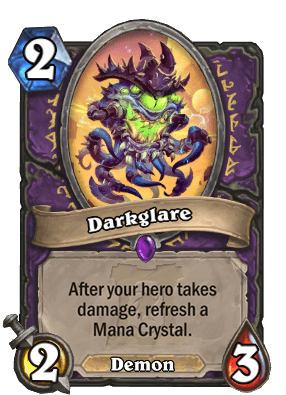
Darkglare Warlock is a self-damage aggro deck with Darkglare serving as the centerpiece. Darkglare allows for plenty of mana cheat that allows the deck to swarm the board with minions as early as turn 2. Molten Giant and Flesh Giant are the big payoffs for damaging yourself, and are often paired with Animated Broomstick to take control of the board or with Loatheb and Cult Neophyte to lock out any response.


LOW
Secret Mage
Ranked: 14 (+1)
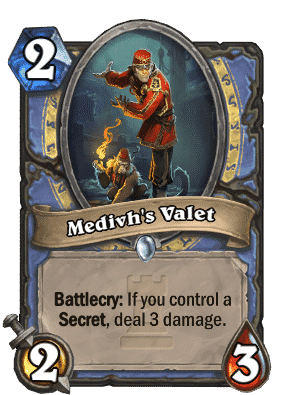
Secret Mage is an aggro deck that seizes board control in the early game by playing discounted secrets that disrupt the opponent’s gameplan. The deck has the ability to both tutor secrets and deal direct damage, while Aluneth provides a way to constantly keep up the pressure and close out games.
Secret Mage used to dominate the meta after Saviors of Uldum gave it the boost it needed with cards like Arcane Flakmage and Cloud Prince, but has since struggled to find its way near the top due to aggressive strategies gaining more tools and players getting much better at playing around secrets. However, Lorekeeper Polkelt has proven to be a very useful tool to ensure that Aluneth finds its way to the top of your deck, followed by tons of burst from Fireball and Cloud Prince.
Secret Mage is still a good choice as it can win any game with the right combination of secrets. However, you might want to take a peek at Reno Secret Mage, which oftentimes does the same thing but let you play around with some power spikes on top.

Galaxy Highlander Mage
Ranked: 15 (+5)
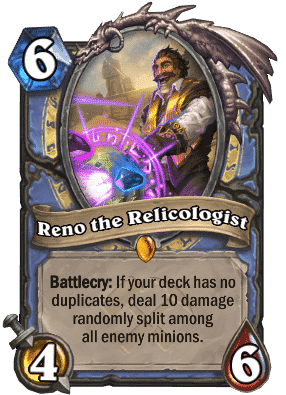
Galaxy Reno Mage is a proactive control deck that relies on not having duplicate cards to activate power spikes such as Reno Jackson, Reno the Relicologist, Kazakus, and Zephrys the Great. Galaxy Reno Mage plays a heavy minion package with Luna’s Pocket Galaxy to overwhelm the opponent with 1-mana, high-value minions in the late game.
The nerf to Tortollan Pilgrim has been both a blessing and a curse for Galaxy Reno Mage. While it means that you can pick Luna’s Pocket Galaxy and not have to worry about a dead draw later in the game, it also means that you can’t double up on some of your most powerful spells, like Potion of Illusion, Ice Block, or Book of Specters.
A major strength of Galaxy Mage is how well it fares against Reno Priest. In this matchup, the most common way for the mage to win is by chaining multiple copies of Loatheb by using Brann Bronzebeard, Zola the Gorgon, Barista Lynchen, or Potion of Illusion. Reno Priest also has a hard time dealing with Ice Block, as it is difficult to get Zephrys to offer secret removal on the Spawn of Shadows combo turn. However, if you happen to queue into Aggro, pray that your highlander cards can get you out of trouble.


Pirate Warrior
Ranked: 16 (-2)
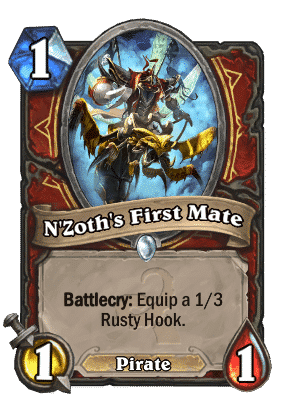
Pirate Warrior is a weapon-based aggro deck that relies on strong early game Pirate synergies to create recurring damage with pirates and weapons. Ship’s Cannon into pirates provide consistent damage, while the Warrior is also capable of closing out games with late-game chargers like Leeroy Jenkins and Kor’kron Elite.
The Wild veteran is back, crippled and a bit woozy. We’ve gotten far past the point where Pirate Warrior has some of the fastest, most oppressive openings in the format. As Corsair Cache now only increases weapon durability by 1 without boosting the attack, the Pirate Warrior isn’t as good at controlling the board early on anymore, while losing out on plenty of damage.
To keep the deck alive, enthusiasts have to innovate. Some players have experimented with Voracious Reader to give the deck some refill, but the card is rather awkward in a deck that plays plenty of 3 and 4 drops. Other versions have opted to include Wrenchcalibur in order to disable Reno Jackson’s full heal.


Libram Paladin
Ranked: 16 (+3)

Libram Paladin is a midrange deck that utilizes the synergies between Libram cards to out-tempo and outvalue the opponent in the mid to late stages of the game. Libram Paladin can choose to play only Paladin cards to take advantage of Lightforged Zealot and Lightforged Crusader, or play a Holy Wrath package for a massive amount of burst.
Libram Paladin is legit, but it might not be the deck you think it is. The Pure variant of Libram Paladin has always been a decent deck, tested thoroughly by players since last expansion. With new cards like Devout Pupil and High Abbess Alura, the Pure version is very good at stabilizing and seizing control in the mid-game, making its matchup spread fairly solid.
However, it turns out that the payoff of the pure cards aren’t all that good in Wild, and it might just be better to include Molten Giant and Thekal for the occasional highroll… and more. This is where Lorekeeper Polkelt comes in. He reorders your deck so your Holy Wrath always hits Shirvallah or Molten Giant. You can either execute this on Turn 9, or better yet, right on Turn 4 and 5 with a delayed Holy Wrath. This almost guarantees a victory against any deck if you have a solid enough opening. The Polkelt version still lacks a bit of consistency to propel it into Tier 1, but the foundation is there.


Secret Highlander Mage
Ranked: 18 (+10)
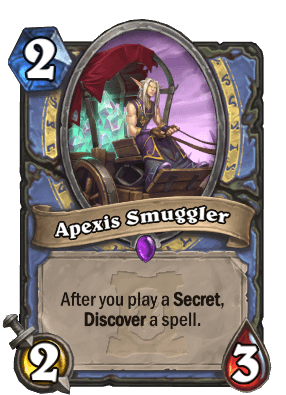
Secret Reno Mage is a variant of Secret Mage. It seizes control of the board in the early game by playing discounted secrets along with highly synergistic secret build-around cards. In addition, the deck also runs Highlander cards to gain access to extra burn, board clears, and health gain.
We’ve talked about how the Highlander package could be utilized in Secret Mage to make use of power spikes. In fact, the deck has already been tested and approved for many months now. As with so many other fast decks, you add Zephrys and Reno to shore up your performance against Aggro, and they work particularly well in Secret Mage. The abundance of secrets and early drops meaning you can often replicate the kind of opening a traditional Secret Mage would have, while gain access to heavier and more effective late-game.
Of course, there are many instances where traditional Secret Mage is just better. At its core, Secret Mage is still a tempo deck, and tempo deck wants to run two copies of their best cards. That means two Kabal Crystal Runners, two Fireballs, two Medivh’s Valets. You’d be disappointed when you play Aluneth hoping to fish for some burn, and then draw Apexis Smuggler and Reno the Relicologist.

Odd Warrior
Ranked: 18 (-10)
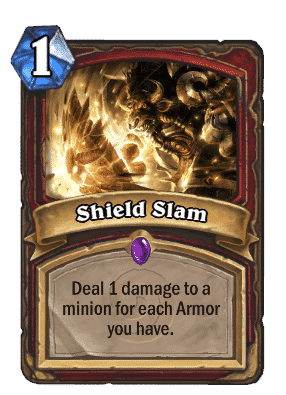
Odd Warrior is a reactive control deck that gains access to 4 armor every turn from Baku the Mooneater’s Start of Game effect. Odd Warrior can utilize some of the strongest removals in their arsenal in Brawl and Shield Slam, while their armor accumulation opens up synergies with various armor-related cards.
The meta has changed, but Odd Warrior is still the same. It is still the answer to some of the best decks in the format like Aggro Druid, Odd Rogue, and aggro in general. But combo and control decks still give a polarizing deck like Odd Warrior a miserable time. It can’t even reliably beat Reno Priest, as they can actually burn through your armor with a combination of Spawn of Shadows, Seance, and Pen Flinger. But hey, at least it didn’t fall off the radar like Dead Man’s Hand.
Any attempt to fit in some greedy cards is probably futile. Archivist Elysiana only solves the fatigue problem. Rattlegore is way too slow. Dr. Boom, Mad Genius and Elise the Trailblazer don’t give reliable answers. The day Odd Warrior is given a crazy late-game win condition is the day it takes over the meta. But until then, you need to make peace with playing button clicker.



Malygos Druid
Ranked: 18 (-1)
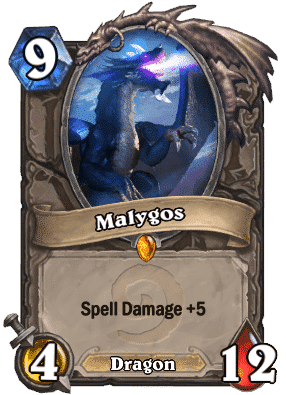
Malygos Druid is a combo deck that revolves around cheating Malygos onto the board and dealing overwhelming damage to the opponent. The typical Druid ramp and armor gain carry it through the early game before it assembles its combo with Juicy Psychmelon and Jepetto Joybuzz.

Odd Shaman
Ranked: 21 (+17)

Odd Shaman is an aggressive-midrange deck that gets its name from playing only odd-costed cards. Powered by Baku the Mooneater’s Start of Game effect, the shaman gets to choose which totem is summoned by their Hero Power. Most of the time, the deck uses the Spell Damage totem to leverage its multitude of direct damage spells. Other totems are also useful for protecting minions or contesting board.
Wait, don’t go! This isn’t a joke! Odd Shaman is a very real thing, proven by a fair number of pilots who have reached high legend with it. Rolling spell damage totems repeatedly to power up your burn spells has always been a thing, but recent expansions have provided a lot of powerful cards for the archetype. Molten Blast and Serpentshrine Portal both work tremendously well as board control tools and direct damage, and they’re excellent follow up to early drops like Tunnel Trogg. Tour Guide makes rolling for the desired totems easier than ever. The deck is much more consistent than before, and it’s not a long way off from standing toe-to-toe with the well-established Even Shaman.
Of course, Odd Shaman is still very flawed. It doesn’t have as strong a board presence as other decks, so it has to transition to a burn-based late game. We all know how poorly this strategy works in a format with abundant healing like Wild. Although Odd Shaman is very good at what it does, its playstyle prevents it from taking the meta by storm.


Highlander Warlock
Ranked: 22 (+12)
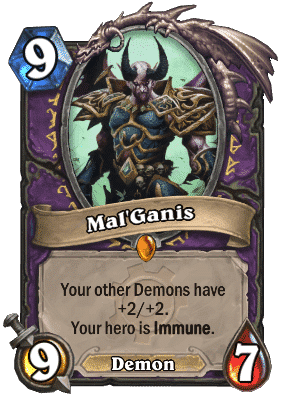
Reno Warlock is a Highlander deck that relies on not having duplicate cards to activate power spikes such as Reno Jackson, Kazakus, and Zephrys the Great. The Warlock core is different from other Reno decks in that it usually revolves around Demon synergies. There is a multitude of ways to build Reno Warlock, but not every Highlander Warlock will be listed under Reno Warlock. A Reno Warlock deck is listed under Renolock if the Highlander cards are a crucial part of their gameplan.
After a long absence, fan-favorite Reno Warlock is finally back on the menu. Although the power level of the deck has hardly changed over the last few months, the meta has become more forgiving with its plethora of aggro decks as well as the uptick in Paladins and Shamans. Reno Warlock can deal with these comfortably, as well as teching in a Grizzled Wizard + Sir Finley combo to beat Reno Priest.
When it comes to new additions to Reno Warlock, Raise Dead is most definitely at the top of the list. There are so many powerful battlecries in the deck that become backbreaking when played a second time. Players still have mixed opinions about Sphere of Sapience, and it hasn’t become a staple in the deck. Common tech cards include Gluttonous Ooze and Doomsayer, while Gnomeferatu has become a lot more valuable as a way to counter Lorekeeper Polkelt. All in all, Renolock still feels like the same old deck putting up the same old results.


Tempo Galakrond Warrior
Ranked: 22 (+13)
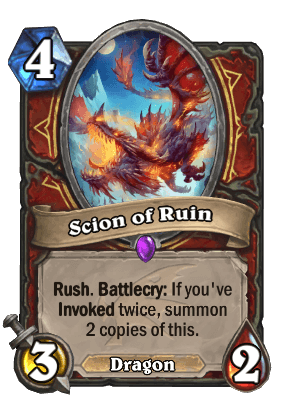
Tempo Galakrond Warrior, as the name suggests, is a midrange deck that wins by outtempoing the opponent in the mid-game. This version of Tempo Warrior relies on the Galakrond core that keeps boosting the hero’s attack as it piles up its Invoke count. The warrior can secure the victory by playing overstatted minions that are drawn from Galakrond on top of its previously generated tempo.
The time of Galakrond is nearing the end. The nerf to Corsair Cache means that it’s no longer worth playing in Galakrond Warrior, at least not over Forge of Souls. Galakrond Warrior’s playrate is suffering, as players are moving away from it to Pirate Warrior. Even with cards like Scion of Ruin, the deck cannot compete as well on board compared to all the other aggro decks. You’ll find yourself losing board more often than not against the better decks, and your power turns aren’t really enough to come back into the game.
The only reason to play Galakrond Warrior now is to perform better against Reno decks. Wrenchcalibur and Clockwork Goblin have become common inclusions, while Lorekeeper Polkelt helps a ton with the deck’s consistency, as it allows instant access to Galakrond on Turn 7. Make sure to not mindlessly play the card on Turn 4 though, and envision your plays a few turns ahead.


Aggro Highlander Hunter
Ranked: 24 (NEW)
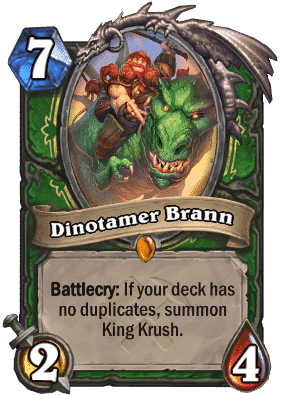
Aggro Highlander Hunter is a Highlander deck that relies on not having duplicate cards to activate power spikes such as Dinotamer Brann and Zephrys the Great. Unlike Midrange Highlander Hunter, Aggro Highlander Hunter foregoes many late-game cards like Zul’jin, Reno Jackson, or Call of The Wild, so it can more consistently play out an early game curve into finishers.
Players have finally figured out that Hunters like small minions; thus, they added more low drops into the deck. If the Hunter can consistently hit a turn 1 Alleycat or Wolpertinger into a Turn 2 Razormaw, they can effectively finish the game before the opponent has the chance to react. Before the inclusion of Lorekeeper Polkelt, many people argued that Hunter doesn’t have as good an early game as other classes anymore, so they need good defensive packages like Secrets to transition into a value-heavy mid-game. While this might be true, Polkelt makes it so the Hunters always get access to Dinotamer Brann and Leeroy Jenkins after their initial pressure phase. This means that there’s a significant edge playing the aggro version over the midrange one.
Furthermore, it’s not like you can’t add value into an aggro deck in the age of Death Knights. Deathstalker Rexxar is value jam-packed inside a single card, and it can be tutored by Polkelt. Although Rexxar is not as good as it was before, it’s still more than possible to simply play out your game and then start hitting the Zombeast button when you start to hit a wall. Some find Rexxar particularly clunky in an aggro deck, but some can’t live without him. We find him perfectly cuttable; after all, we’re already at the point where we’re removing Reno from a Reno deck.

TIER 3

CLASS META RANKING

MAGE
RANK 1 – 414 POINTS
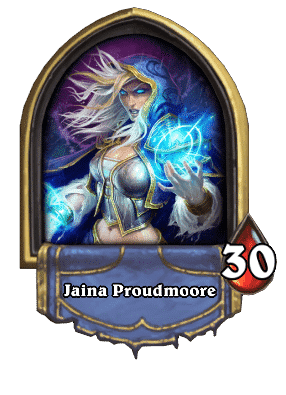
Jaina has made an incredible comeback, a massive leap from rank 5th to 1st. This success is largely owed to the omnipresent and well-established Time Warp Mage. The departure of Darkglare Warlock gave breathing room to so many Mage decks that the class as a whole became prevalent even after Tortollan Mage left the playing ground.
Time Warp Mage is back and is bullying Priests more often than ever. The rise of Cube Warlock is also good news for the deck, as Mages can yank out win more often than Warlocks can build walls. With a more solid early game, Aggro decks have to be even faster to consistently beat Time Warp Mage, and not many can do this as easily as Aggro Druid does. All in all, Time Warp (and Reno Time Warp) is put in a very favorable environment to thrive on top of its already improved core.
As Secret Mage doesn’t always gather enough damage to beat Priests anymore, people are flocking on the new fad that is Reno Secret Mage. The Highlander variant is less reliant on Aluneth, less susceptible to Zephrys and healing, and more resilient against Aggro. The lack of consistency might mean that you lose some frustrating matches, but it might be worth the trade-off.
Galaxy Reno Mage is strong again thanks to the shift in the meta. Like Time Warp Mage, the deck is designed to beat decks that are slower than itself. The only problem is that Galaxy Reno Mage is slower than Time Warp Mage, so there isn’t many reasons to play this deck over the infamous combo deck unless you like big legendaries that do cool things.
Odd Mage, equipped with plenty of upgrades from the last expansion, has returned to the scene. The deck has a particular niche of being adequately armed against Aggro, with cheap missiles, Spell Damage minions, and Ras Frostwhisper to boot. Odd Mage still feels short of damage against any deck that’s slightly slower, however, and if you want to build it to beat Control, it doesn’t work as well against Aggro anymore.
WARLOCK
RANK 2 – 413 POINTS

Warlock stands at the second spot, literally 1 point behind Mages in the closest race ever to the top. After a short stint as the Aggro plaguebringer, Gul’dan is once again doing things he has been doing for most of his time in Wild: cheating out demons and healing himself up. Well, almost. Discard Warlock still has a respectable presence as one of the most consistent Midrange decks out there. But the majority of the Warlock decks you find on ladder currently are either Cubelock or Renolock.
Discard Warlock is neither flashy nor attractive, but it wins more than it loses. It was in fact a winner of the Darkglare nerf. Not only it can step outside the shadows of its once oppressive cousin, it also inherited Darkglare to fuel its early turns. With Darkglare and Kanrethad, the Discard player can hit an early spike consistently enough to leverage their later card advantage. For these reasons, we think that Discolock, not Cubelock, is the best Warlock deck in the current environment.
Darkglare Warlock now feels the pain of being in the shadow of others. The deck is still perfectly functional, it’s just that its both less highrolly and less consistent than before. Some people even thought of keeping Darkglares as the only Demons so they can play two Darkglares on turn 4 after a Sense Demons, imitating the kind of mana cheat it once had. Most of the experiments haven’t been fruitful, however, so we are left with a deck that’s only a remnant of what it once was.
Out of all slow decks, Cubelock performs the best, much better than Egg Cubelock. The Egg version is supposed to give more early game tempo for an edge against Aggro decks. But the Aggro decks now laugh on the puny eggs, and Doomguards doesn’t help the Egg Cubelock defending at the later stages. Therefore, the traditional demon cheating route is still the tried-and-true option. If you don’t enjoy Cubelock, you can always play Renolock. The deck accomplishes the same thing, it just does so less consistently.
Even Warlock has had some significant upgrades with Flesh Giant and Raise Dead, but they’re struggling to go from there. Some people are advocating to cut the long-standing Twilight Drake, claiming that the whole dragon package, the Drakes included, are just not at a good enough power level anymore. Maybe they are correct, since Even Warlock feels very underwhelming at the moment.
Hobgoblin Zoo Warlock, or Cutelock, takes advantage of all the 0-cost minions that can be easily refilled using Voracious Reader or Raise Dead. These cards can be turned into 3/3s or 4/4s very early on in the game. Cutelock is well, cute, but it’s not very effective. Not only that you do crazy things rather late, but you also has no resource to refill a second time if your board gets wiped. For now, Hobgoblin Warlock stays at the bottom of Tier 3.
PRIEST
RANK 3 – 269 POINTS
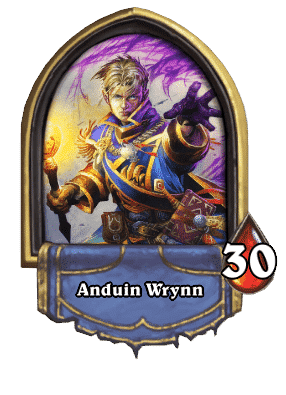
Anduin has only climbed to Rank 3 in this meta snapshot. While Reno Priest is a major contender for the best deck in the game, it’s also the only relevant Priest deck. This puts Anduin in a major disadvantage, as class meta ranking is a team game. Every single class above Anduin has at least two good decks inside Tier 1 & 2 to boot, while Anduin’s reinforcements are all Tier 3 at best.
Other Priest decks show sparkles of potential, but none of them have blazed into meta contenders yet. Inner Fire Priest can combat on board better now that Power Word: Feast heals the minion immediately. It can also win games versus Control deck by playing Mindrender Illucia and locking their answers, but with Illucia nerfed to 3 mana, it will take a lot more planning to achieve this. You can also play a Dragon package that can steal the opponent’s big minion and OTK them, but your plan falls apart as soon as your opponent catch on to what you’re doing. The Dragon package is also used abundantly in the Midrange version of Reno Priest, but there really is no reason to play it over the combo version.
SHAMAN
RANK 4 – 259 POINTS
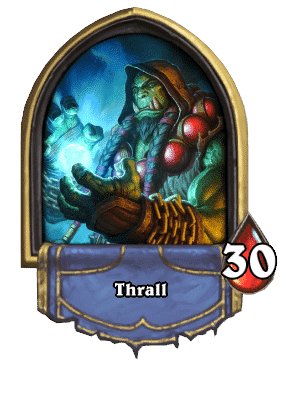
If you look closely at the meta ranking, you will see that the classes ranked 2nd to 7th are actually very close together in terms of power level. However, the main difference between Priest (and to an extend, Rogue) and the other classes in this group is that these other classes usually possess a few relatively strong decks instead of one top contender. With three Tier 2 decks, Shaman is the prime example of a class that does decently but never seem to have a breakthrough.
Big Shaman is starting to pick up in playrate, and rightly so. It’s one of the best decks you can play against Aggro that has a decent chance against Control Warlocks and Quest Mages. Big Shaman both has very efficient clears and early taunts, as well as the ability to strategically play an Ancestor’s Call as a pseudo Dirty Rat. Even Shaman is less good against Warlocks and Mages, but they generally perform better against other Midrange decks and Reno decks. The matchup spread of these two decks are very similar, however, so either of them are fine options for laddering. One thing that bugs us is between the two decks that should have similar performance, one deck sees significantly more play than the other. Maybe people just got bored of Even Shaman after years of playing, or maybe a large portion of the playerbase secretly loves Big Priest and don’t have to hide it with Shaman.
Speaking of performance not matching playrate… Odd Shaman is here to prove that its nothing to sniff at. With cards like Lightning Bolt, Lava Burst, and access to Spell totem whenever you want, the deck has some of the best burn potential in the game. Couple up with good board combat cards like Speaker Gidra Serpentshrine Portal, and Molten Blast, Odd Shaman looks like a fun alternative to established Shaman decks should you grow bored of them.
Reno Shaman has proved that it’s not yet obsolete, as Paradox took it to Rank 1 Legend two months in a row. The deck has enough stall and disruption to win odd games, but we wouldn’t consider it a worry-free option for laddering. But at least it’s better than pure Shudderwock Shaman or Evolve Shaman at the moment.
WARRIOR
RANK 5 – 256 POINTS
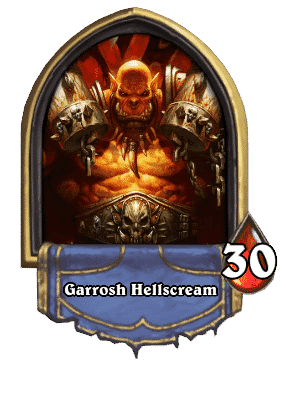
A diverse meta is not a good meta for Garrosh. Warriors like to target as few things as possible, and it’s hard to counter the meta when there are too many decks being played. Odd Warrior handles Aggro very well, Bomb Warrior and Galakrond Warrior slay Reno decks, Pirate Warrior can hand justice to Quest Mages. But none of them can do all three.
The fall of Bomb Warrior is pre-determined. Although Reno Priest is still the strongest deck on ladder, it’s playrate is far from the whopping 30% we’ve seen during the Darkglare meta. Bomb Warrior is only especially good against Reno Priest and somewhat good against Reno Mage, but struggle a lot more versus Reno Warlock who can put up taunts. It’s a decent deck against Aggro but not to the point choosing it over other anti-aggro decks is a no-brainer. Bomb Warrior falls into Tier 2, and the trend might continue should the meta get even more volatile.
Moving the opposite direction is Galakrond Warrior. The deck was exceptionally bad because it was out-tempoed by both Kingsbane Rogue and Darkglare Warlock. Right now, it can target slow Control decks with its ability to churn out damage and close out games, something that Bomb Warrior isn’t particularly good at. And it can shut down Reno decks just as well!
Odd Warrior and Dead Man’s Hand Warrior are two decks that occupy similar niches, and the one that’s better against Aggro stands taller. Odd Warrior is more resilient, more consistent, and generally more reliable than Dead Man’s Hand. Dead Man’s Hand Warrior can win some spectacular games, and is much better against combo decks like Druids, but they don’t make up a significant portion of the meta at the moment. If there’s one thing both decks are decent at, then it’s getting Legend day 1 when there are a whole lot of Aggro around. This means perfect Rank 1 Legend screenshots, just when it matters the least. But who cares? They don’t label the date on the pictures.
Big Warrior is fun and you can play Rattlegore. Let’s leave it at that.
ROGUE
RANK 6 – 251 POINTS
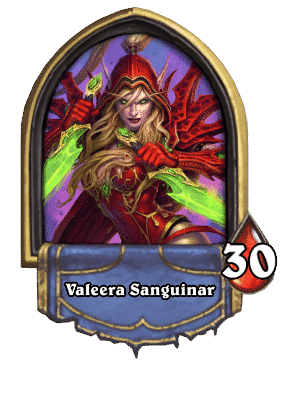
Rogue is a specialist class. It has three decks that function somewhat the same, target the same set of classes, and lose to the same kind of counters. The class has received arguably the biggest mass of playable cards in Wild, yet only pre-nerf Secret Passage seemed particularly important. It should be said though, that Rogue actually has two decks hovering around Tier 1, so the class’ poor standing reflects its monotonic playstyle rather than its actual strength.
Odd Rogue—the only Rogue deck inside Tier 1—it’s the better choice than Kingsbane Rogue in a meta where Darkglare doesn’t exist. The deck can comfortably tech for Reno Priest, Kingsbane Rogue, and other Aggro, while is much more resilient against Bomb Warriors than its cousin. Kingsbane Rogue is a better choice against Quest Mage and slightly better against Warlocks, so you might want to pick your deck depending on the meta.
DRUID
RANK 7 – 246 POINTS
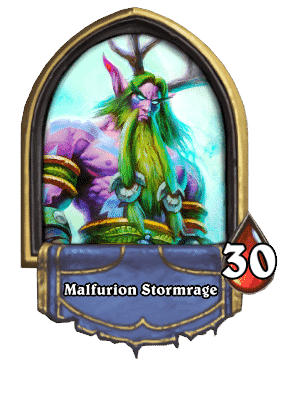
As if Druids aren’t weak enough after the Kael’thas nerf, Blizzard decided to give it another blow. Now decks like Jade Druid and Taunt Druid bid farewell to ladder. At least Druids haven’t been completely cast aside yet, as Aggro Druid is still keeping the class relevant despite all the setbacks.
Aggro Druid is one of the few true Aggro deck of the meta, and is a deck you can play when you’re not sure which deck to play. Its all-in nature means it doesn’t have any auto lose matchups, a characteristic not often seen in Tier 2 decks right now.
Malygos Druid is like a Time Warp Mage but weaker, and this is especially true after the nerf to Kael’thas. The deck now has little chance to race against Aggro, which might lose it quite a few percentages against Aggro Druids, Discolock, and Rogues. A saving grace to this deck is that Priests have mostly cut Illucia from their deck, which means it is impossible for them to stop or slow down the Malygos combo turn. Togwaggle Druid and Linecracker Druid are even slower and less reliable, and their win condition sometimes doesn’t win the game. If you have to pick between the three, we suggest playing Malygos.
Jade Druid is just slow and clunky, especially after Guardian Animals is nerfed. Much of its lifeline has been in the hand of Kael’thas, who produces early blowout turn against Aggro and gives the Druid hope to outrace Darkglare, if at all. Now Druid has to go back to playing Vargoth and Oaken Summons, which isn’t nearly enough. Jade Druid also can’t put pressure on Priests anymore, which means they can only tank up, lie still, and take blows from Anduin. Not the best strategy if you look at how Odd Warrior fares against Priests.
Taunt Druid ditched the unlimited Undatakah package in the Darkglare meta, but given how Cubelocks there are on ladder, it should consider adding him back. It’s not like an 8-mana Guardian Animals is an attractive proposition over Undatakah, right?
PALADIN
RANK 8 – 203 POINTS
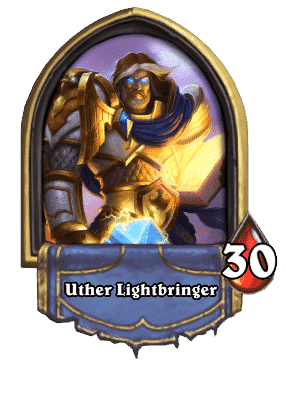
Uther is still a fair bit dwindling compared to the relevant classes of this meta. Odd Paladin remains its flagbearer while Tip the Scales Paladin and Libram Paladin are catching up, but their low playrate in general greatly affects the multiplier.
Odd Paladin is one of the best Midrange decks right now, and it’s easy to understand why. The deck has the best board-generation Hero Power in the game, and is the best Hero Power for Tour Guide across all game modes. If there’s a deck that can perform remarkably decently 99 out of 100 games, this is the deck. Odd Paladin is the garbage-proof for the class so that it never suffers from a gruesome fate like that of Hunter. Now that Time Warp Mage reigns again, there’s even more reason to play Odd Paladin. Uther would much rather playing against Jaina than Gul’dan or Garrosh.
Libram Paladin and Tip the Scales Paladin might be the new rising stars this patch, if they can solve their own issues. While Libram can both defend well against Aggro and put significant pressure against Control, Tip the Scales is the true highroll machine. Each deck has its own set of problems, however. While Libram Paladin is really consistent against faster deck, it needs to hit Polkelt and Holy Wrath to have a chance against Reno Priest and Cube Warlocks. Even if it does, the Control deck can often keep itself healthy and try to heal up after a Holy Wrath hit. Meanwhile, Murloc Paladin doesn’t struggle against Control, or even Aggro. It struggles against itself. When you hit the right cards from Alura or Lens, it’s unstoppable. When you don’t, it’s utter garbage. The more tempo-oriented version without Anyfin might solve some of the consistency issue, but in return, you get less damage output.
Mech Handbuff is in shambles, with Replicatron being its only change in ages. Replicatron is a really annoying minion, especially when buffed and magnetized on. It’s a very sticky and undoubtedly powerful minion that also acts as a late-game powerhouse; however, it doesn’t solve Handbuff’s weakness to silence effect.
HUNTER
RANK 9 – 118 POINTS
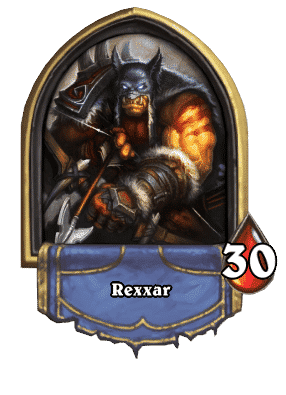
Hunter is not at the bottom! It hasn’t looked that well off in so long, and we aren’t even joking about this one. Polkelt has breathed a new life into the class and brought back the Aggro playstyle that used to be Rexxar’s trademark. There are officially two different ways to build Reno Hunter now, and both of them don’t look terrible. We can’t say the same about all the other Hunter decks, though.
Aggro Highlander Hunter is the truth. It brings Hunter back to its core: pressure hard early on and finish the game with chargers. King Krush, Leeroy Jenkins, and Dragonbane are the minions lined up after Polkelt is played, and the represents at least 22 damage over three turns. Many games would be over by then, unless you choose to play Deathstalker Rexxar. Midrange Highlander Hunter isn’t half bad, however. It’s just that it doesn’t have a proactive enough gameplan to chip in damage against Control, and might feel a bit clunkier against Aggro.
Even Hunter’s playrate dropped significantly when Darkglare isn’t around. The deck was only really good at disposing Darkglare and Time Warp Mage, and now it has lost a major target to bully. Even Hunter struggles to beat Priests unless it goes really heavy, but as with many other decks, you don’t win against Aggro anymore if you beef up. Odd Hunter is a very good deck for bullying Mages and Warlocks, and it’s surprisingly not that bad against other Aggro too, with all the new cards designed for early board control. However, it still needs to up its percentage by a couple in all matchups to be considered a legit deck.
Mech Hunter and Beast Hunter are the remaining Aggro decks of the class. Both decks aren’t really strong at the moment, but they are trying to revitalize themselves nonetheless. Mech Hunter uses Voracious Reader and Chopshop Copter to refill. Beast Hunter has also ditched the full beast package for Voracious Reader, Ace Hunter Kreen, and Shan’do Wildclaw.
DEMON HUNTER
RANK 10 – 56 POINTS
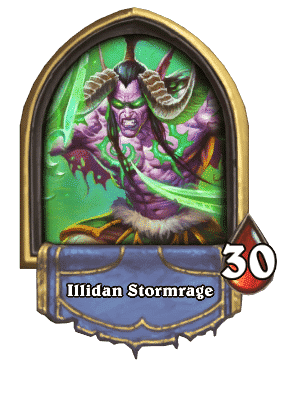
Nerfs after nerfs and Illidan is not looking particularly good. However, there is light at the end of the tunnel for Demon Hunter. For a moment, we got to see how good Odd Demon Hunter could be in Wild. We’re seeing glimpses of that in Soul Demon Hunter, a deck that still functions all right even without access to all the Wild cards.
It’s thought that Trueaim Crescent and Ace Hunter Kreen could help Odd Demon Hunter fight off other Aggro decks. In truth, these cards did help a bit, but it’s far from enough when many other Aggro decks have improved (and can meaningfully play Tour Guide) too. In the damage output department, though, Demon Hunter has made significant progress. Intrepid Initiate couples up with Demon Companion for a bloodthirsty Turn 2. Pen Flinger is also a tech option along with all the cheap spells. Magehunter helps to get through pesky taunts. If the game only requires straightforward send-everything-face kind of stuff, then Demon Hunter can still do it very well.
Soul Demon Hunter takes on an identical shell to its Standard counterpart, adding in more damage like Glaivebound Adept to accommodate what is possibly the best upgrade Wild has to offer: Brann Bronzebeard. With a good roll from Skull of Gul’dan, Brann can deal 20 damage or more when played alongside a couple of Soulshard Lapidaries. Brann also works remarkably well with Pen Flinger, Glaivebound Adept, and Loatheb. Because there are so many better taunts in WIld, a variety of cards are used to bypass them, like Kayn Sunfury, Magehunter, or Magtheridon. The deck has an exciting prospect, and it’s interesting to see how it will flourish in the future.
Reno Demon Hunter has seen some really meager success. The deck employs a N’zoth package on top of a decent removal toolkit, but it lacks a win condition akin to Bloodreaver Gul’dan or Shadowreaper Anduin. Until it gets something like a hero card, we don’t see Reno Demon Hunter being a thing.
Deck Codes (other Decks)













































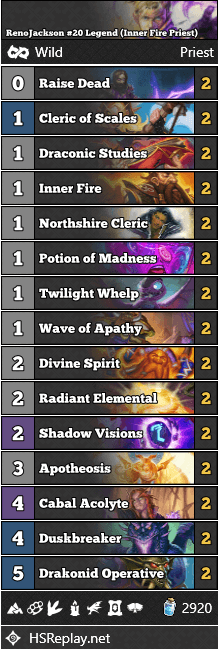





















You might also be interested in...
- Exploring Cultural Implications of Slots in Various Regions October 22, 2024
Maybe you also like:


